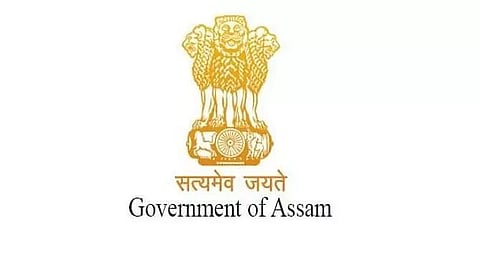
- Home
- Live Blog
- Breaking News
- Top Headlines
- Cities
- NE News
- Sentinel Media
- Sports
- Education
- Jobs

Assam government
introduced the bills, which if passed by the current winter session of the
Assam Assembly will pave the way for constitution of interim governments of the
three new autonomous councils – Moran Autonomous Council, Matak Autonomous
Council and Kamatapur Autonomous Council. The powers and functions of the
autonomous councils created under the state acts still have many grey areas
which deserve focused attention from policy makers. Creation of the councils
have triggered hopes for flow of dedicated fund for uplift of the areas under
these councils. Creation of the autonomous councils under the state act as a
response to the aspirations of different ethnic communities in the state was
started by the then Congress government in 1995. The state government created
Rabha Hasong Autonomous council, Tiwa Autonomous Council and Mising Autonomous
Council in 1995 while the Congress government created three more autonomous
councils – Thengal Kachari Autonomous Council, Sonowal Kachari Autonomous
Council, and the Deori Autonomous Council in 2005. The councils have core and
satellite areas as there is no geographical contiguity of the villages with
majority of the particular community for which the autonomous council has been
set up. The powers of these councils include the formulation of the integrated
development plans, implementation of schemes and programmes, appoint Class III
and IV staff, issue permit for trade and commerce, impose and collect levy or
tax. The government provides Tribal Sub-Plan and other resources to these
councils.
These six councils are different from the three new autonomous councils as these have Scheduled Tribe communities as the majority population in the council villages. The new councils have been set up for Morans, Mataks and the Koch Rajbangshis which are clamouring for ST status along with three other communities- Tai Ahoms, Chutia and Adivasis/Tea-Tribes and not yet granted the ST status. Hence the fund for new councils cannot come from Tribal Sub-Plan. Besides, overlapping of the Panchyati Raj Institutions (PRI) and these autonomous councils have been creating confusion in administration and governance in the core as well as satellite areas. The Ministry of Panchayati Raj in 2006 set up an Expert Committee to specify modalities of district planning for Sixth Schedule Area and those areas not covered by the Parts IX and IX A of the Constitution. The provisions pertaining to these two parts of the Constitution provide for Panchayats and municipalities. In its report, the Expert Committee states that PRIs continue to exist in autonomous councils set up by the state governments under the acts passed by the state assembly and there is no constitutional basis to remove the PRIs from these council areas in Assam. In Nagaland and hill areas of Manipur, the autonomous councils created under state acts are exempted from the purview of the Panchayati Raj Act. The expert committee pointed out that "there are three authorities operating in parallel in these areas, namely the Council, the State departmental system and the Panchayati Raj system." The committee recommended that the issues must be urgently solved so that there is a single authority. The confusion due to institutional overlap still continues as the recommendation is yet to see the light of the day. The issues highlighted by the Expert Committee bring the core issue to the centre stage of identity discourse- how far the councils created on ethnic lines can fulfil the aspirations of self-governance of ethnic communities without such problems being addressed by the government. The separation of the functions between the council, state departments and PRI and delegations of the power accordingly should be done to end the problem of institutional overlap. In absence of the clearly defined powers and functions the council roles are reduced to mere distribution of funds and benefits of schemes to targeted beneficiaries.
The Moran Autonomous Council and Matak Autonomous Council will have 22 elected members, three nominated members each while the Kamatapur Autonomous Council will have 26 elected member and three nominated members. The provision for formation of the interim governments will trigger fresh hopes of local self-governance among these three communities, which, the ruling Bharatiya Janata Party-led government hopes will reduce among them the adverse impact of the delay in granting ST status to the six communities. The rush to constitute the interim governments in these councils is an attempt to neutralize opposition making the delay over the ST status to the six communities as poll plank in 2021 Assembly elections. The hard realities, however, remain that be it interim government or elected government, the autonomous councils will not be able function as local self-government in true sense till the issues relating to overlapping of the powers and functions raised by the Expert Committee are addressed. The Central government, the State government and these councils need to sit together and find urgent solution to the problem of institutional overlap.